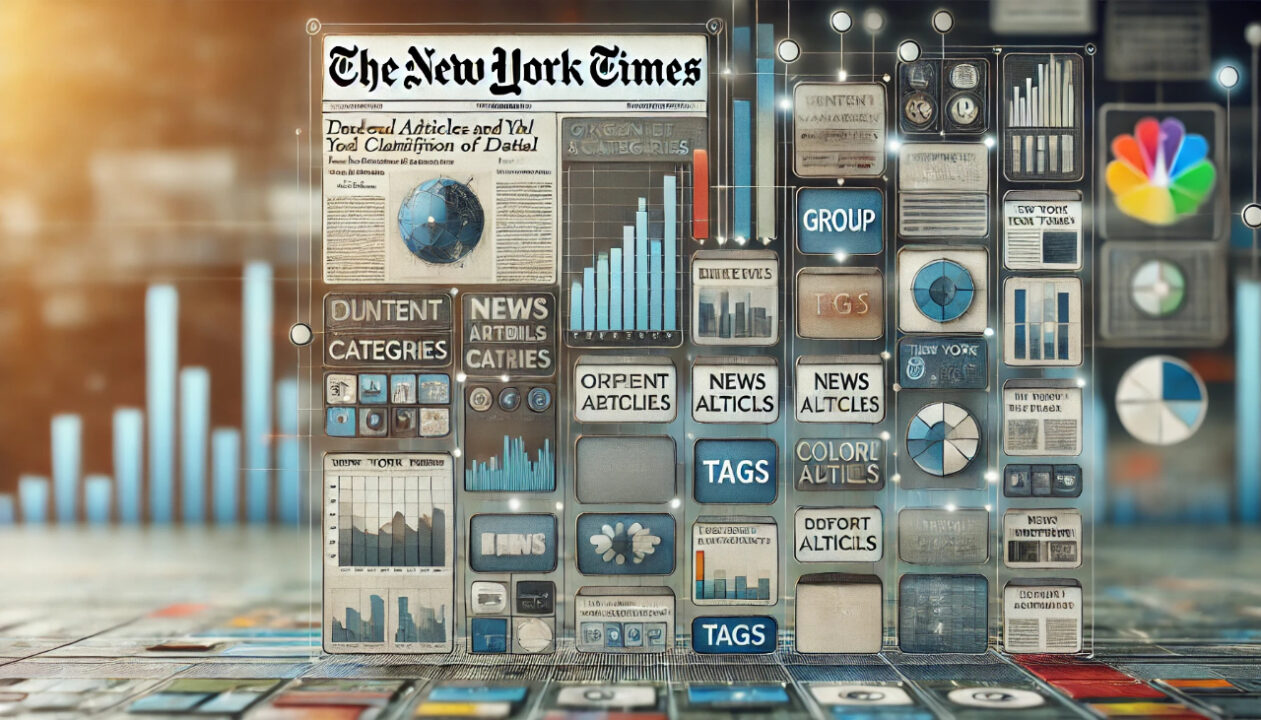When it comes to organizing vast amounts of data, one critical step is to classify into separate groups. This is a process widely utilized across industries, including media platforms like the New York Times (NYT). Proper classification ensures that vast data, articles, or information are not just available but also accessible, understandable, and relevant. The importance of classification for media houses like NYT cannot be overstated, especially in the digital age where information is produced at an exponential rate.
This article delves into the mechanisms behind the practice of categorizing data, particularly with NYT content. We’ll explore different classification methods, their importance, and how they streamline operations.
Why Classify into Separate Groups NYT?
The New York Times, with its legacy of over a century, produces thousands of articles and information pieces daily. Without proper classification, finding relevant information would be akin to searching for a needle in a haystack. Readers may struggle to discover what they need if the content is not sorted effectively.
You May Also Like: Grinch the Undying Glitch: The Unbeatable Bug
Classification enables the smooth flow of information by organizing content based on topics, themes, or readership preferences. When NYT content is systematically classified into groups, it:
- Enhances user experience by making articles easier to find.
- Simplifies archival processes.
- Improves recommendations through AI algorithms.
The Role of Tags and Metadata in NYT Classification
Metadata and tags play an indispensable role in how NYT classifies its vast content. These elements serve as markers that guide both the system and users in navigating through the immense collection of articles.
Metadata includes essential data about an article, such as its author, publication date, and content type. It allows the backend systems to categorize articles based on factors such as relevancy and recency.
On the other hand, tags are keywords that can classify articles into broader or more specific topics. For instance, an article about climate change may be tagged under “Environment,” “Climate Policy,” or “Global Warming.”
These tags and metadata work in harmony to create categories that make the NYT easier to browse, improving both search engine optimization and user satisfaction.
Classification Methods Used by NYT
1. Hierarchical Classification
This method involves categorizing content into a structured tree format. At NYT, hierarchical classification may be used to break down broad topics into subcategories. For instance, a main category like “Technology” can be subdivided into “Artificial Intelligence,” “Gadgets,” and “Software.”
2. Tag-based Classification
Tagging enables NYT to assign multiple labels to a single article, helping readers find content via various lenses. An article about a famous tech entrepreneur could be classified under “Business,” “Profiles,” and “Innovation,” depending on its scope.
3. Machine Learning Algorithms
NYT employs machine learning to automate the classification of its content. This process analyzes various article elements like keywords, tone, and context to group them effectively. Algorithms are designed to constantly improve, offering smarter classification over time, thus optimizing user engagement.
The Importance of Grouping Content for NYT’s Business Model
At the heart of NYT’s classification strategy is the importance of data for its subscription-based business model. Readers tend to prefer personalized experiences, and classified content allows for more targeted offerings. For example, a reader who frequently consumes articles about health can be shown more content from that niche, leading to higher satisfaction and prolonged subscription.
Through effective classification, NYT can ensure that its readers are not overwhelmed by irrelevant content. Instead, they are gently guided toward topics that align with their preferences, thus increasing readership and loyalty.
Challenges in Classifying NYT’s Expansive Content
While the benefits of classifying content are numerous, the task itself poses several challenges:
- Volume of Data: With thousands of articles published daily, manually classifying content becomes impractical. NYT has to rely heavily on automation, which is not always perfect.
- Ever-changing Topics: Current events can shift rapidly. NYT needs to adapt its classification methods continuously to remain relevant. A trending topic today may not hold the same significance tomorrow, making real-time reclassification essential.
- Subjectivity: Articles often intersect various themes. While one piece might be relevant to multiple categories, determining the primary classification can be subjective, leading to inconsistencies.
The Role of AI and Automation in NYT Classification
Artificial intelligence has become a key player in content classification. AI systems can scan text, images, and even video content, grouping them into appropriate categories based on sophisticated algorithms. At NYT, AI helps classify content faster, learning from past data to make increasingly accurate decisions.
Moreover, AI-driven recommendations based on classification increase user retention. For example, by analyzing which groups a reader frequently visits, AI can suggest similar articles, leading to a more engaged readership.
Human Involvement in Classifying NYT Content
Despite AI’s advances, human oversight remains vital in NYT’s classification process. Editors still play a crucial role in ensuring the accuracy and appropriateness of categories. They evaluate articles, particularly those covering sensitive or multi-faceted subjects, ensuring they are correctly grouped.
Furthermore, human input is essential in setting up the initial classification structure. While AI can learn and adapt, humans need to create the foundational categories that AI will use as reference points.
Classify into Separate Groups NYT: Best Practices for Effective Categorization
If you aim to classify vast content like NYT, some best practices can streamline your process:
- Create Clear and Distinct Categories: Avoid overlapping categories to prevent confusion.
- Utilize Tags Effectively: Tags should not be overused. Instead, opt for specificity.
- Regularly Update Categories: As new trends emerge, your classification structure should evolve.
- Balance AI with Human Oversight: Automation is helpful, but it should complement human decision-making for accuracy.
- Encourage User Feedback: Pay attention to how readers navigate your categories and adjust based on their behavior.
How Classification Improves Reader Experience on NYT
A well-classified structure greatly enhances the user experience. Readers appreciate the ability to quickly find what they are looking for, without being bombarded by irrelevant content. A finely-tuned classification system ensures that content flows logically and intuitively, making navigation through NYT’s expansive library seamless.
With the rise of personalized news feeds, classification also allows NYT to tailor content to individual users’ preferences. This personalization further deepens engagement, as readers are met with articles that reflect their interests. Ultimately, this encourages longer reader sessions and higher subscription renewal rates.
Common Missteps to Avoid When Classifying Content
Misclassification can lead to disorganized content that frustrates readers. A few common mistakes include:
- Over-categorization: Too many categories dilute the system, making it confusing.
- Inconsistent tagging: Misused tags can lead to articles being filed in irrelevant sections.
- Ignoring trends: Failing to reclassify trending topics can cause readers to lose interest quickly.
Classify Into Separate Groups NYT: Future Trends
As AI becomes more sophisticated, we can expect NYT’s classification methods to evolve further. Real-time data analysis and predictive algorithms may soon allow content to be classified based on potential future trends, further improving relevance. Additionally, the rise of multimedia content such as podcasts and videos will require new classification approaches to ensure they are as easily searchable as written articles.
In today’s digital world, the ability to classify into separate groups, particularly for a giant like the New York Times, is indispensable. Through careful classification, vast amounts of data become accessible and understandable, improving both reader satisfaction and content engagement. While challenges exist, the blend of AI-driven automation and human oversight ensures that NYT stays ahead of the curve, providing an efficient, intuitive, and personalized experience for its vast readership.





